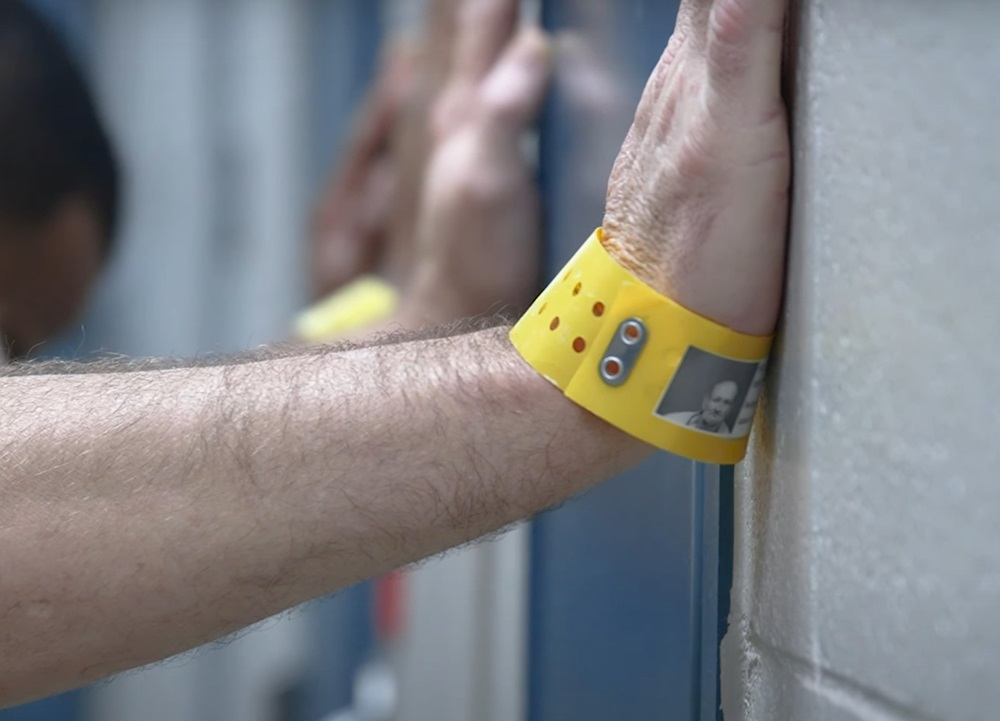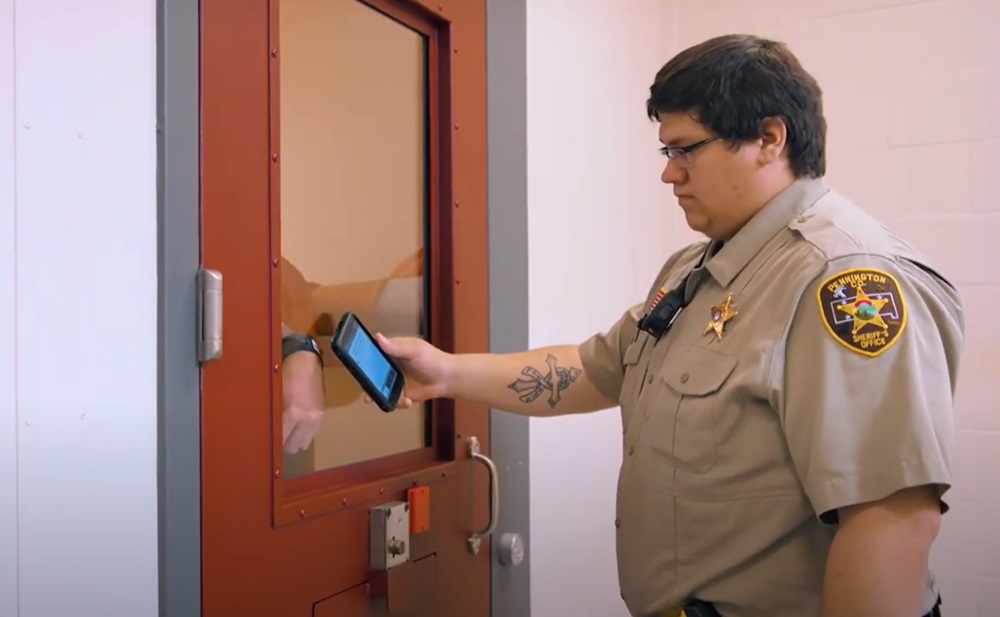Five Tips to Maximize Successful Inmate Identification
Performing rounds quickly while staying diligent and providing accurate documentation can be difficult without a little help. When there are hundreds of inmates in your facility, it’s hard to keep track of each inmate.
This isn’t just a P.I.T.A. for correctional officers, but it can also become a huge safety risk. If an inmate was issued a razor, you definitely want to know who currently has it and how long they’ve had it for. Regardless of the extremity of the supplies issued out or where inmates may be going outside of their block, having a solution to streamline the identification of each inmate as well as document their activities and movements is a game changer for correctional officers.
So, which inmate identification tools should you consider? This blog will break down the five different methods that can help maximize your success, efficiency, and effectiveness with inmate identification solutions.
Key Considerations
Not all facilities are built the same. Each agency has unique needs and circumstances that dictate the type of tools and resources they need to have a well-functioning facility. However, all facilities have three basic factors to consider when choosing an inmate identification solution:
Do we want inmates wearing something?: Most inmate identification solutions are physical materials that need to be attached to the inmate in order to track effectively. The two most common forms of inmate identification are wristbands or ID cards.
Can we support auto identification?: Auto-identification can be done via RFID, barcodes, and QR codes with ideally strong Wi-Fi implementation in the facility.
What should be our method of data collection?: The way data is collected can be through mobile scanners, fixed scanners, or even both.
When mulling over the three categories above, it’s almost important to consider:
Size: Every agency comes in all different shapes and sizes, including how many inmates it can accommodate. If your facility only averages under 50 inmates, you don't necessarily need individual inmate identification like wristbands or IDs (but it sure helps!). Conversely, when you have a facility that holds over 100 inmates, this individual identification drastically speeds up inmate tracking.
Budget: Size and budget often go hand-in-hand with one another (i.e., a small facility usually has a small budget). This is a HUGE contributing factor in which method(s) an agency is using for inmate tracking and identification.
Security: With the different types of inmate identification solutions, there are different levels of security. The same goes for agencies, the level of security ranges from facility to facility. So, when selecting a solution, it’s crucial to evaluate how strong security plays in this decision.
By contemplating these factors, you’ll be able to identify the facility’s goals better, creating a more effective inmate identification initiative suited for your facility.

Wristbands vs. ID Cards?
Whether you’re a small or large facility, understanding the difference between investing in wristbands or identification cards as inmate identification solutions is important.
Generally speaking, pre-trial facilities deploy wristbands to their inmates more often than ID cards because of shorter incarceration periods. Wristbands offer cost-effective, short-term use solutions and support a variety of color choices for visual classification purposes. Since they have a shorter lifespan and are the more affordable options, wristbands have become ideal for jails.
Whereas ID cards are more commonly used on sentenced inmates because they generally hold up longer (assuming no intentional abuse) than wristbands. ID cards can be printed to include basic demographic information in addition to colors for visual classification efficiency. Since these are typically the more durable options, ID cards are more popular in prisons or juvenile facilities.
Wristbands are more prone to intentional inmate abuse, as well as moisture damage. ID cards are often an inmate’s passport for everything from movements to meal offerings. However, while a common fear amongst those considering ID cards is transferability between inmates, the more prominent problem is forgetfulness.
RFID vs. Barcodes & QR Codes?
RFID technology is proximity-based, meaning that an RFID tag and an RFID reader are contactless, never requiring line-of-sight scanning the way that barcoding and QR codes do. In this sense, RFID also offers ease of use over barcodes – especially for corrections professionals using RFID to log group movements, meal offerings, recreation, etc.
Barcodes and QR codes can easily be physically destroyed, replicated, and falsified. You can photocopy QR codes, take pictures of QR codes with a smartphone, or, even more easily, use one of the numerous QR code generators online and make your own.
While it may seem that being able to scan a QR code/barcode from anywhere might add a sense of convenience, it also poses safety concerns. With RFID, the officer has to be in close proximity to scan a tag, encouraging officers to get closer to the area they are checking and ensuring checks are actually being done when they’re said to be done.
This is where cost versus security comes into play. While barcodes and QR codes cost virtually nothing to create, certain risks accompany this form of auto-identification. With RFID, you’re paying extra for heightened security and reliability. The tradeoffs for corrections leaders are huge, especially when data integrity is mission-critical.

Handheld Scanners vs. Fixed Scanners…or Both?
The form of auto-identification you choose (wristband or ID card) will have a significant impact on the level of automation you achieve both short term and in the long run. For example, let’s say you want to capture offered recreational activities to all of the inmates in a pod. Some go, some don’t. This type of log entry can be captured quickly using an RFID handheld scanner, such as GUARDIAN RFID’s SPARTAN.
Then, maybe you want to identify what time inmates entered recreation – assuming that your recreation yard is separate from the pod. A fixed RFID reader can automate data collection at the point of entry to capture time, identity, and location.
If you choose barcodes or QR codes for auto-identification, a staff member will need to hand scan each inmate entering recreation at the point of entry since these scanning methods require line of sight. Since RFID is proximity-based, it is faster and requires less manual effort by staff to automate specific types of data collection.
You’ll also want to consider the various locations in which you may need to verify staff and inmate presence, such as inmate worker areas (kitchen, laundry, etc.). While these areas are typically staffed, it may be more efficient to have inmates walk past a fixed RFID reader to capture proof of presence than to hand scan each individual inmate tag. That’s not to say that hand-scanning each inmate is an ineffective practice – but there are times when the ease of a fixed reader may be preferred over scanning individual inmates.
Maximize your inmate identification success with these 5 tips.
Adopt a zero-tolerance policy for inmate non-compliance: Create and communicate any policy changes that reflect your inmate identification initiatives. This should include swift, severe consequences to discourage second and hopefully even first-time offenses. Many facilities consider adopting a replacement cost (factoring in labor costs for staff to make the replacement ID) plus 24-hour lockdown, loss of commissary, or other privileges that will make all inmates strongly consider their decisions to deliberately not comply.
Ensure staff are fastening wristbands securely at all times: If inmates had better coping skills, they wouldn’t be in jail in the first place. When they complain about a wristband being too tight, what they’re usually really saying is that they don’t want to wear it at all. They forfeited this right when they were arrested. A wristband should never be able to slide off. If it can be, that’s often a staff implementation issue. Wristbands are supposed to be right for a reason - to say on their wrist!
Ensure that your laminator’s temperature setting is correct every time: Delaminating wristbands – especially those with premature moisture issues – are often the result of the heating laminator set to a temperature that’s too low. The optimal temperature is between 325 and 330 degrees. Suppose your facility has its laminator “ON” for most of the day in booking (even if it’s not being used). In that case, the heating element of the laminator can wear out and it may not reach the appropriate melting temperature. This can cause the wristbands to delaminate prematurely.
Selecting a reliable and consistent fastener for your wristbands: If you’ve chosen wristbands for your facility, you will need to contemplate the type of fastener to choose: metal or plastic. Both can be extremely effective. However, some facilities find better success with one type or the other, but all inmates should receive the same type of fastener. Inmates may incorrectly perceive other inmates using a different type of fastener as some sort of badge of honor, so, it’s best to use a “one fits all" fastener strategy.
Invest in a wearability factor for inmate ID cards: If your agency has selected ID cards, consider a plastic clip and adopting a policy that requires inmates to wear their ID cards at all times. This will cut down on forgetfulness, loss, and potential theft.
Inmate identification is not just a tool of convenience but a critical piece in the security and safety of the facility. Choosing a system tailored to your agency's specific needs is the first step in adopting an efficient and effective approach to inmate identification. Determining which tools and technologies are best is just one part of maximizing success, following the five tips we highlighted above will ensure the safety and security of your facility and those inside.